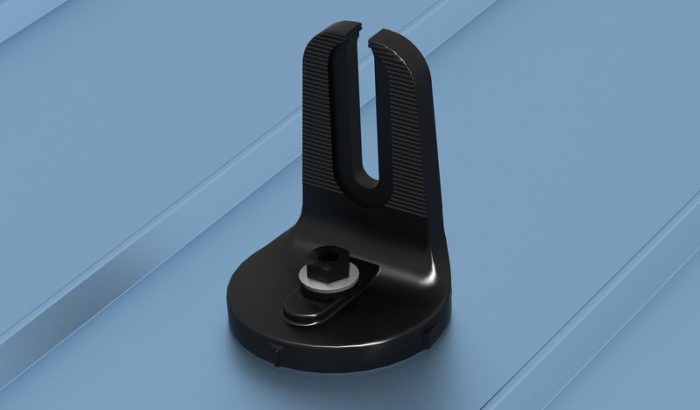Originally Posted In: Solar Builder Magazine – https://solarbuildermag.com/
Authored By: Chris Crowell
Mounting solar on metal roofs often requires many product SKUs to match the variety of metal roof profiles — but there might be a better way. On The Pitch, Solar Builder’s YouTube series covering new solar products, Steve Mumma, CEO of SunModo, stops by to explain how they simplified their metal roof attachment product line with the NanoBit and MRB. Watch the full 10-min chat right here:
Key takeaways
SunModo has two new attachments for metal rooftops – the MRB and the NanoBit. The major focus is reducing metal roof mounting SKUs.
Mumma: “When we first started looking at a new family of metal roof attachments I went and I counted the number of metal roof attachment SKUs that we were selling at that point. I don’t remember the exact number, but it was in the range of 17 SKUs, and that’s not fun for anybody.
“That’s an issue that most everybody in the industry faces. Everybody likes to have a smaller number of SKUs, so metal roofs have always been difficult for distributors and installers and the manufacturers for that reason. It’s largely driven by the fact that metal roofs tend to be very regional, so there’s just tons of different shapes and profiles and whatnot, so it’s hard to have products that are versatile.
“So, our goal was to go back to the drawing board and come up with products that provided better value in terms of cost but also better value in terms of versatility — having a smaller number of products that will work for most every metal roof that people will come across.”
NanoBit is similar to the NanoMount, and can be used on comp shingle roofs too. But there are two key differences that make it nice for certain metal rooftop applications.

Mumma: “Visually, it looks pretty similar to the NanoMount. It was largely driven by the fact that we had a lot of people using the NanoMount on metal roofs — which is fantastic, it’ll work great — the problem is that the base of the NanoMount is wider than a lot of the flat portions on metal roofs. NanoBit fits in a smaller area and also lowers cost because it’s less material and only takes a lag bolt.”
Trapezoidal roofs are likely the main metal roof profile applicable to the NanoBit.
Mumma: “It’ll be a little more specialized, but I think when there’s an opportunity to use it, it will offer the opportunity to have longer spans therefore lower cost compared to other roof attachments.”
The MRB, on the other hand, is designed to fit the vast majority of metal roofs (except standing-seam). This is how SunModo plans to reduce metal roof mouting product SKUs.
Mumma: “The flexible wings essentially allow you to attach in just about any type of form factor.
“With the MRB, if you’re on a corrugated roof for a trapezoidal roof, the wings can fold down, attach to the size of that. The advantage in that case is that your roof penetration is elevated above the lowest point, so water is less likely to be present in those locations and therefore it just makes your makes your sealing easier. We do have an EPDM gasket on the bottom, so we’re going to get a good seal.
“The other adjustment we have here is that these wings can slide in and out, so you can accommodate a very wide range of different shapes and profiles.
“The other advantage is that … the MRB can go completely flat. So if you want to mount it just to the flat space on a metal roof, you can do that as well. That’s why I feel confident saying that it will attach to just about any type of metal roof.”
Mumma: “It will be based on our NanoMount. … I guess I have to call it a rail-less system so people kind of know what we’re talking about, but we hesitate to call it a rail-less system. …
“Generally, there’s two reasons [some installers don’t like rail-less], first being the level of precision that’s required on the roof. There’s a lot of measuring, and the layout has to be very precise. The second issue, generally speaking, is wire management. Once you take the rail away, you lose the thing that installers use to manage wires on the roof. We set out to solve those two pain points.”

